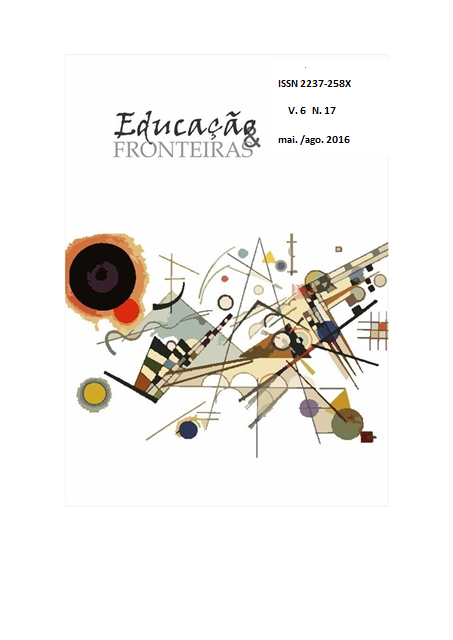Social representations of Cuiabá: comparative study between children’s cognitive maps in public anda private schools
Keywords:
Sociospatial representations. City. Childhood.Abstract
This is to analyze the city social representations according to public school children (SILVA, 2014) as well as private (POUBEL, 2016). The theoretical support departed from the ontogenetical social representation approach and the Cultural Historical Theory in dialogue with the findings of Bourdieu (2004) and Sennett (1988). Cognitive maps made by 80 children (40 private and 40 public) used as methodological procedure (ALBA, 2011) were analyzed according to the content analyses approach (BARDIN, 1977). The findings point to a representational field characterized by information (about the city) linked to the children’s routine, these latter ones guided by adults who monitor structured opportunities for their learning and development. We observed larger variety in the maps collected from the public school where on-foot or public transportation routes are made. The children from private schools see the city from inside their car windows with special attention to the large avenues, public streets and logos. In both groups, there is the recurrence of private spaces such as shopping malls, shops and family spaces. Thus, identified representational content in Cuiaba indicate the influence of different social positions of the groups according to the spaces they live in and the mediation done by adults.Downloads
References
ALBA, Martha de. Representações sociais: estudos metodológicos em educação. PRADO, C., et al (orgs). Curitiba: Champagnat; São Paulo: Fundação Carlos Chagas, 2011.
APOSTOLIDIS, T. Représentations sociales et triangulation: une application en psychologie sociale de la santé. Psicologia: Teoria e Pesquisa, v. 22, n. 2, p. 211-226, 2006.
BOURDIEU, Pierre. Economia das trocas simbólicas. Sérgio Micelli (org.), 5 ed., Ed Perspectiva, São Paulo, 2004.
DUVEEN, Gerard. Crianças enquanto atores sociais: as representações sociais em desenvolvimento. In: GUARESCHI, P. A. Textos em representações sociais. Pedrinho A. Guareschi, Sandra Jovchelovitch (orgs). 2 ed. Petrópolis, RJ: Vozes, 1995.
GÓMEZ-GRANELL, Carmen; VILA, Ignacio (orgs.). A cidade como projeto educativo. Porto Alegre: Artmed, 2003.
JODELET, Denise. A cidade e a memória. In: DEL RIO, V.; DUARTE, C. R.;
RHEINGANTZ, P. A. (Org.). Projeto de Lugar: colaboração entre psicologia, arquitetura e urbanismo. Rio de Janeiro: Contra Capa Livraria, 2002. (Coleção ProArquitetura). p. 31-43.
LIMA, Rita de Cássia Pereira; CAMPOS, Pedro Humberto Faria. Campo e grupo: aproximação conceitual entre Pierre Bourdieu e a teoria moscoviciana das representações sociais. Educação e Pesquisa, v. 41, n. 1, p. 63-77, 2015.
POUBEL, Paula Figueiredo. Representações sociais de Cuiabá: estudo com crianças em contexto de escolas particulares. Dissertação (Mestrado em Educação) – Universidade Federal de Mato Grosso: Cuiabá, 2016.
SENNETT, Richard. O Declínio do Homem Público- As tiranias da Intimidade, São Paulo, Companhia das Letras, 1988. Janeiro, UFRJ/FGV, 1988.
SILVA, Eliza Moura Pereira. Representações socioespaciais da cidade de Cuiabá-MT, segundo crianças. Dissertação (Mestrado em Educação) – Universidade Federal de Mato Grosso: Cuiabá, 2014.
VIGOTSKI, Lev Semionovitch. Quarta aula: a questão do meio na Pedologia. Tradução de Márcia Pileggi Vinha. Psicologia USP, São Paulo, v. 21, n. 4, p. 681-701. 2010.









